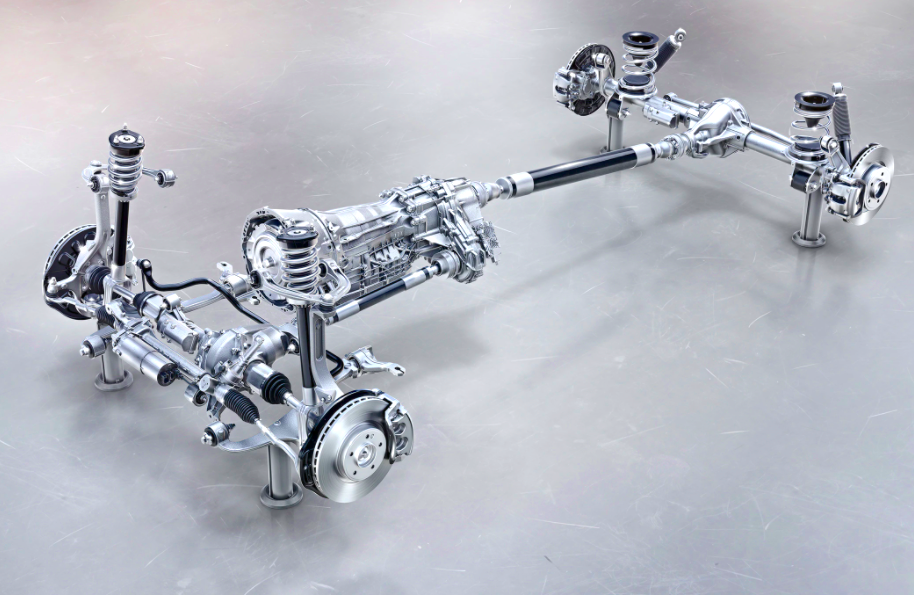Mercedes 9G-Tronic Gearbox Explained In Detail

This gearbox was first introduced back in 2014 and still being improved.
Here is some interesting information on the Mercedes-Benz 9G-Tronic. This popular gearbox superseded the Mercedes 7G-Tronic which arrived in 2003. Eleven year later in 2014 the 9G was released widely with the W222 Mercedes-Benz S-Class. (it was tested a year earlier with the E350 Bluetech.
Soon after some twenty (20) different Mercedes models including their luxury SUV’s were using this state of the art gearbox.
PRESS RELEASE: The drive element of a classic automatic gearbox is the hydrodynamic torque converter. In the new 9G-TRONIC, the engineers have improved the hydraulic circuit in the torque converter and increased its efficiency to up to 92 percent.
This extraordinarily good figure is important for fuel economy, as the losses imposed by physics when transferring the engine torque to the gearbox’s input shaft are kept to a minimum. In short: the 9G-TRONIC converts a very high proportion of the engine power into tractive power. In the first-generation 7G-TRONIC dating from 2003, the efficiency of this component was only 85 percent.
The heat generated during operation is reliably dissipated via the transmission oil cooler. Conversely, the 9G-TRONIC requires no additional radiator to warm the cold gearbox oil when cold-starting under Arctic conditions. The second-generation, synthetic Fuel Economy low-friction oil also performs reliably at extremely low temperatures.

More comfort: twin turbine torsion damper and centrifugal pendulum
One of the most comfort-enhancing and at the same time fuel-saving features is the torsion damper, which compensates even more effectively for eccentricities and vibrations within the transmission.
A basic physical law operates in this case: the lower the rpm and road speed, and the lower the number of cylinders, the more pronounced these can be. This results in a conflict of aims between comfort and fuel-efficient operation.
It is resolved by the use of a twin turbine torsion damper additionally fitted with a centrifugal pendulum. Depending on the rpm, this shifts the center of gravity and also allows comfortable vehicle operation in the most fuel-efficient operating range.
Moreover, the optimized damping enables slip in the torque converter lockup clutch to be reduced considerably, which likewise contributes to fuel economy.
For the first time, a return spring has been integrated into the torque converter lockup clutch of the 9G-TRONIC. The multi-disc lockup clutch was previously only hydraulically controlled. Use of the return pressure spring allows reliable and comfortable activation even at very low rpm.
New gearing concept with nine speeds patented worldwide
An intensive, computer-based system analysis and mock-up made it possible to realize a nine-speed gearbox with just four simple planetary gear sets and six shift elements. Mercedes-Benz has secured a worldwide patent for this specific configuration, which the engineers consider to be the best possible.
A planetary gear set consists of the outer ring gear, the inner center gear and between them the planetary carrier with the four planetary gears and their bearings. Four planetary gears are required in the 9G-TRONIC so that the expected torque of up to 1000 newton meters can be reliably transferred in future engine/gearbox combinations.
The ring gear, planetary carrier and center gear in a planetary gear set are connected by carriers and multi-disc clutches, or braked by the multi-disc brakes which are supported by the transmission housing. This enables the planetary gears to transfer drive torque to the inner teeth of the outer ring gear or to the outer teeth of the inner center gear. The result is several gear ratios, and at the same time it is possible to reverse the direction of rotation for e.g. reverse gear.
The gear ratio is the ratio between the number of gear teeth on the driving and transferring gears. Depending which planetary gear sets are connected in series, blocked or separated, multiplying the part ratios produces the overall ratio for the relevant transmission gear.
In the 9G-TRONIC, the individual gears are engaged by three multi-disc clutches and three multi-disc brakes.
The purpose of the multi-disc clutches is to transfer the drive torque between two components as a friction connection.
The ratio configuration of gears one to nine allows a wide ratio spread of 9.15. For the same performance compared to preceding transmissions, the rpm level is considerably lowered – as a decisive factor for the high energy efficiency and NVH comfort of models equipped with the 9G-TRONIC.
Reliable oil supply using the power of two pumps
To ensure the reliable and at the same time highly efficient supply of the durable and shear-resistant 2nd-generation synthetic fuel economy engine oil, the 9G-TRONIC is fitted with two pumps.
The considerably size-reduced, mechanical main pump installed “off-axis” lies next to the main shaft and is driven via a chain. In an automatic transmission such as 7G-TRONIC, the main oil pump previously ringed the transmission shaft and was directly driven. This meant that the diameter of the transmission shaft prevented the pump from being reduced in size as desired.
For this reason, the highly efficient vane cell pump is now placed alongside the main shaft (“off-axis”), and is reduced in size to suit requirements.
The mechanical main pump, which ensures the oil supply to the electro-hydraulically controlled automatic transmission when the internal combustion engine is running, is backed up by a separate electric auxiliary pump. On the one hand this design enables the flow of lubrication and coolant to be controlled actively on demand, and at the same time also means that the 9G-TRONIC can benefit from a start/stop system. In subsequent hybrid applications, this additional oil delivery also allows so-called “sailing”, i.e. maintaining a constant speed without using the internal combustion engine.
When the engine is off – for example at a red traffic light in start/stop mode – the electric auxiliary pump is actuated, ensuring a defined basic pressure and guaranteeing that all necessary functions are maintained. When the driver wishes to move off on a green light, oil delivery by the electric pump after engine-starting guarantees immediate and agile acceleration. In certain operating states with the engine running, the auxiliary pump also assists the main pump, for example at very low engine speeds or in very high temperatures. In this case the flow of oil is added as needed to ensure smooth gear shifts or when there is a higher cooling requirement.
This innovative oil supply concept using a mechanical main pump and electric auxiliary pump, as well as demand-related control, accounts for around 54 percent of the total fuel-saving potential of the 9G-TRONIC. The relationship is clear: the less oil that has to be moved within the transmission by more efficient pumps, the higher the overall efficiency. The fully synthetic Fuel Economy low-friction oil also contributes to this.
Maximum precision: main transmission shaft with three deep-drilled holes
The main transmission shaft is another technical highlight of the 9G-TRONIC. Firstly, it is one of the longest shafts in the entire automotive industry at 550.9 millimetres. Secondly, it performs other functions in addition to its main purpose of power transmission: using a sophisticated internal ducting system, the shaft also performs various lubricating, cooling and control functions.
On the engine side, a large axial hollow-drilled hole measuring a few centimetres supplies the front planetary gear set with oil, which reaches the right places via smaller transverse holes. The drilled holes on the output side of the main shaft are far more interesting, however.
Three parallel holes each measuring 6.1 millimetres are deep-drilled into the transmission shaft with a core diameter of 16 millimetres to a depth of up to 361.5 millimetres. These three deep-drilled holes have various functions in the 9G-TRONIC: via transverse holes, they ensure a defined oil flow rate to lubricate and cool the planetary gear sets and shift elements. They also perform an important control function, and transfer the set gearshift pressure to the muilti-disc clutches and brakes.
Compact lightweight construction: reduced weight with the same installation space
With the change in generation from the 7G-TRONIC to the 9G-TRONIC, the development engineers placed further emphasis on the area of “compact lightweight design”. Despite two additional gears and a maximum transferable torque of up to 1000 newton metres, the new automatic transmission requires just as little installation space as its predecessor, the 7G-TRONIC PLUS, and is also one kilogram lighter.
The two-piece housing design has been retained: the torque converter housing is made of lightweight aluminium alloy. The transmission housing with a weight-optimised plastic oil pan is made of an even lighter magnesium alloy.




